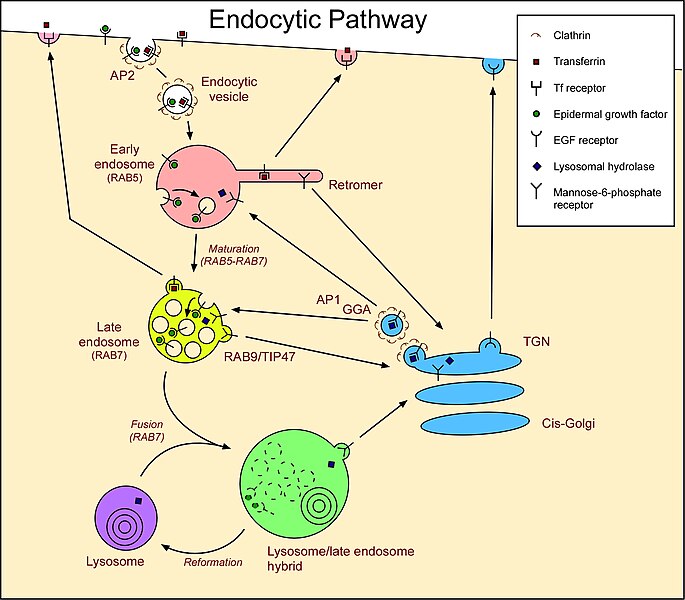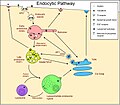File:Endocytic pathway of animal cells showing EGF receptors, transferrin receptors and mannose-6-phosphate receptors.jpg

Size of this preview: 685 × 600 pixels. Other resolutions: 274 × 240 pixels | 548 × 480 pixels | 877 × 768 pixels | 1,170 × 1,024 pixels | 2,112 × 1,849 pixels.
Original file (2,112 × 1,849 pixels, file size: 600 KB, MIME type: image/jpeg)
File history
Click on a date/time to view the file as it appeared at that time.
| Date/Time | Thumbnail | Dimensions | User | Comment | |
|---|---|---|---|---|---|
| current | 21:20, 11 November 2009 |  | 2,112 × 1,849 (600 KB) | Putneybridgetube | {{Information |Description={{en|1='''The endocytic pathway in animal cells.''' Endocytosed molecules from the cell surface are internalized to early endosomes. These then develop into late endosomes/multivesicular bodies (MVBs) by maturation; recycling |
File usage
The following pages on the English Wikipedia use this file (pages on other projects are not listed):
Global file usage
The following other wikis use this file:
- Usage on bn.wikipedia.org
- Usage on bs.wikipedia.org
- Usage on ca.wikipedia.org
- Usage on cs.wikipedia.org
- Usage on de.wikipedia.org
- Usage on et.wikipedia.org
- Usage on fr.wikipedia.org
- Usage on gl.wikipedia.org
- Usage on he.wikipedia.org
- Usage on ja.wikipedia.org
- Usage on mk.wikipedia.org

